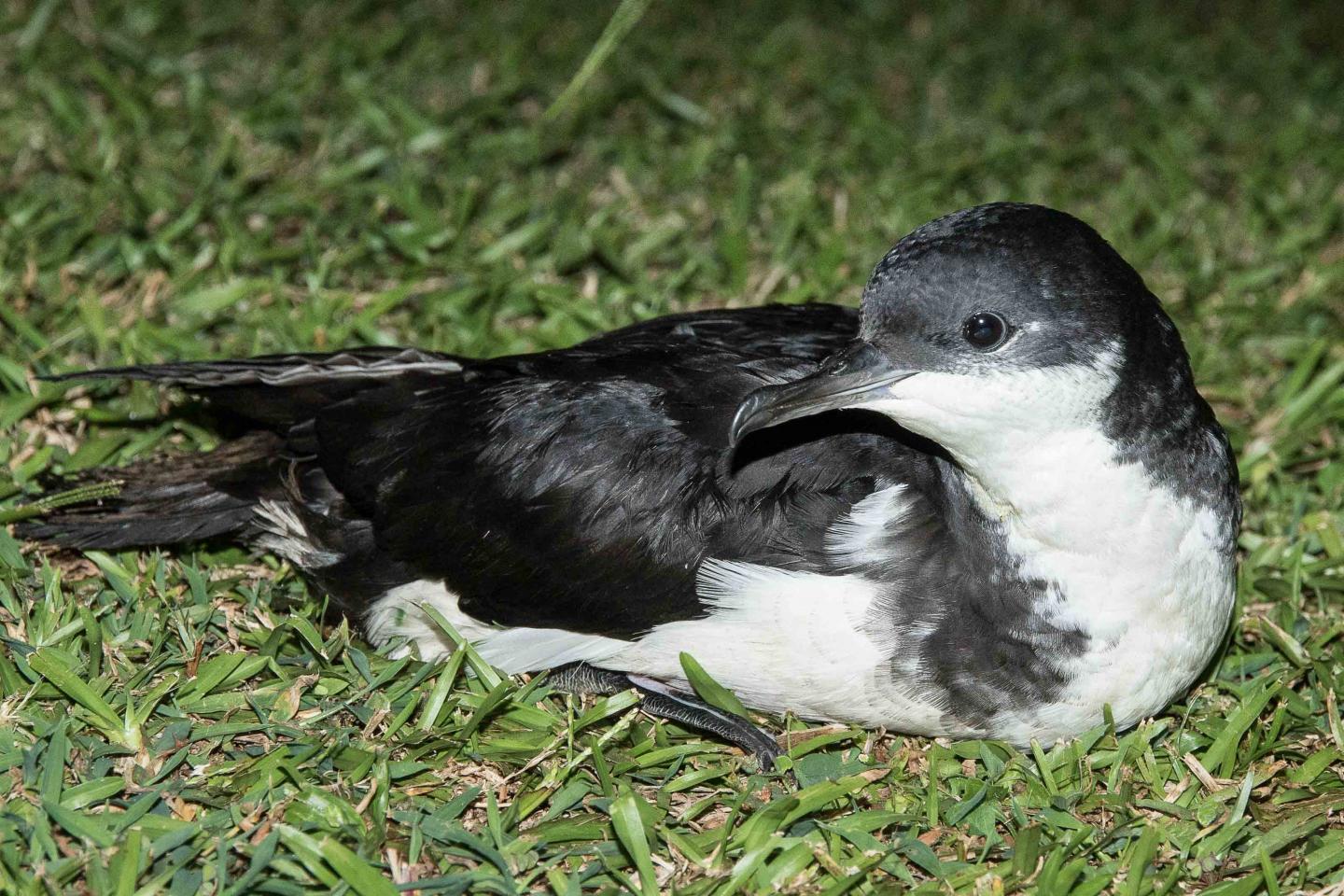
Newell’s Shearwater, photograph by Lindsay Young, Pacific Rim Conservation
Gregory Spencer (H.T. Harvey & Associates Ecological Consultants, Los Gatos, California, USA) and colleagues have published in the open-access journal Marine Ornithology on the history of the successful establishment of a breeding colony of Critically Endangered Newell's Shearwaters Puffinus newelli protected from introduced predators.
The paper’s abstract follows:
“We report the development of a colony of threatened Newell's Shearwater Puffinus newelli (NESH) at Makamaka‘ole, West Maui, USA, a successful first undertaking in the Hawaiian Islands. Efforts involved the construction of two predator-proof fenced areas, removal/control of predators, placement of nest boxes, and social attraction using recorded calls and decoys. Initially, one of the management areas was intended for Hawaiian Petrel Pterodroma sandwichensis (HAPE) and the other for NESH. Exclosures were completed and mammalian predators were removed in 2013, and social attraction began in 2014. Both species almost immediately began flyovers to inspect speakers and by 2015, they had landed to inspect nest sites. Cameras recorded activity at nests during which individuals showed interest and, in at least one case, competed for the same nest. The first NESH eggs were laid in 2017, by which time HAPE had lost interest. NESH numbers continued to grow, especially after more speakers were added in 2019, when at least one but as many as five NESH chicks fledged. Two main questions arose: 1) What was the source population from which NESH had come, given their near extirpation on Maui? and 2) Why did HAPE, which are abundant in East Maui and on the nearby island of Lāna‘i, eventually lose interest? Better understanding the population and behavioral ecology of these species might well inform planning for similar projects elsewhere in Hawai‘i.”
Reference:
Spencer, G., Craig, M., Yuen, B. & Ainley, D. 2024. Establishment of an incipient Newell’s Shearwater Puffinus newelli colony on Maui. Marine Ornithology 52: 157-164.
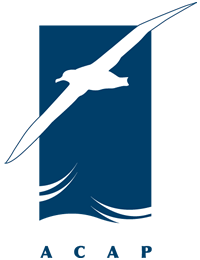
 English
English  Français
Français  Español
Español 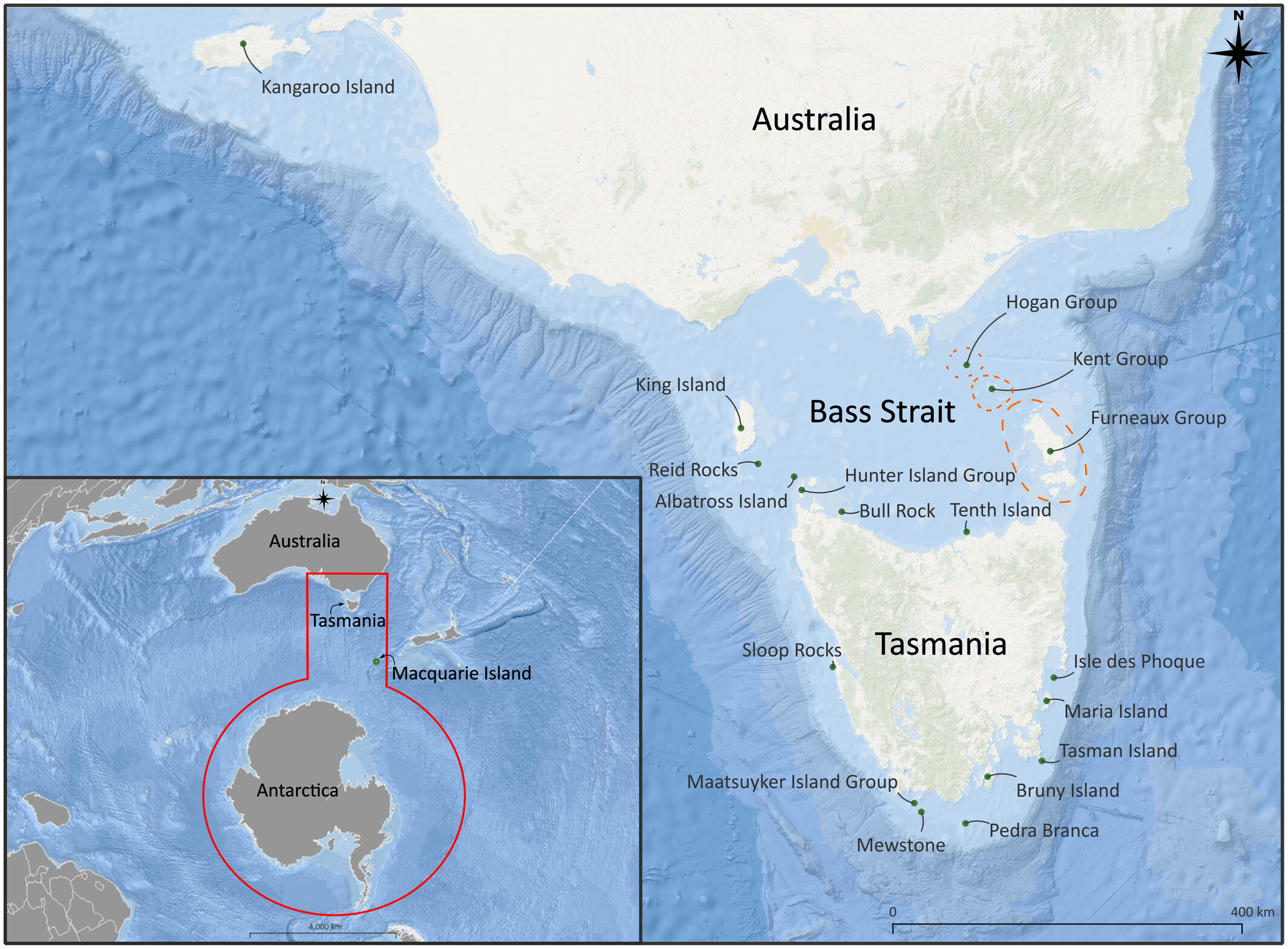 Figure 1 from the paper: Map of the study area. The study species were selected from the red-highlighted regions, encompassing the temperate islands of Bass Strait, Tasmania, and southeast Australia, Subantarctic Macquarie Island, and the Antarctic continent. The detailed map of southeast Australia includes several key marine predator breeding colonies. Map lines delineate study areas and do not necessarily depict accepted national boundaries.
Figure 1 from the paper: Map of the study area. The study species were selected from the red-highlighted regions, encompassing the temperate islands of Bass Strait, Tasmania, and southeast Australia, Subantarctic Macquarie Island, and the Antarctic continent. The detailed map of southeast Australia includes several key marine predator breeding colonies. Map lines delineate study areas and do not necessarily depict accepted national boundaries.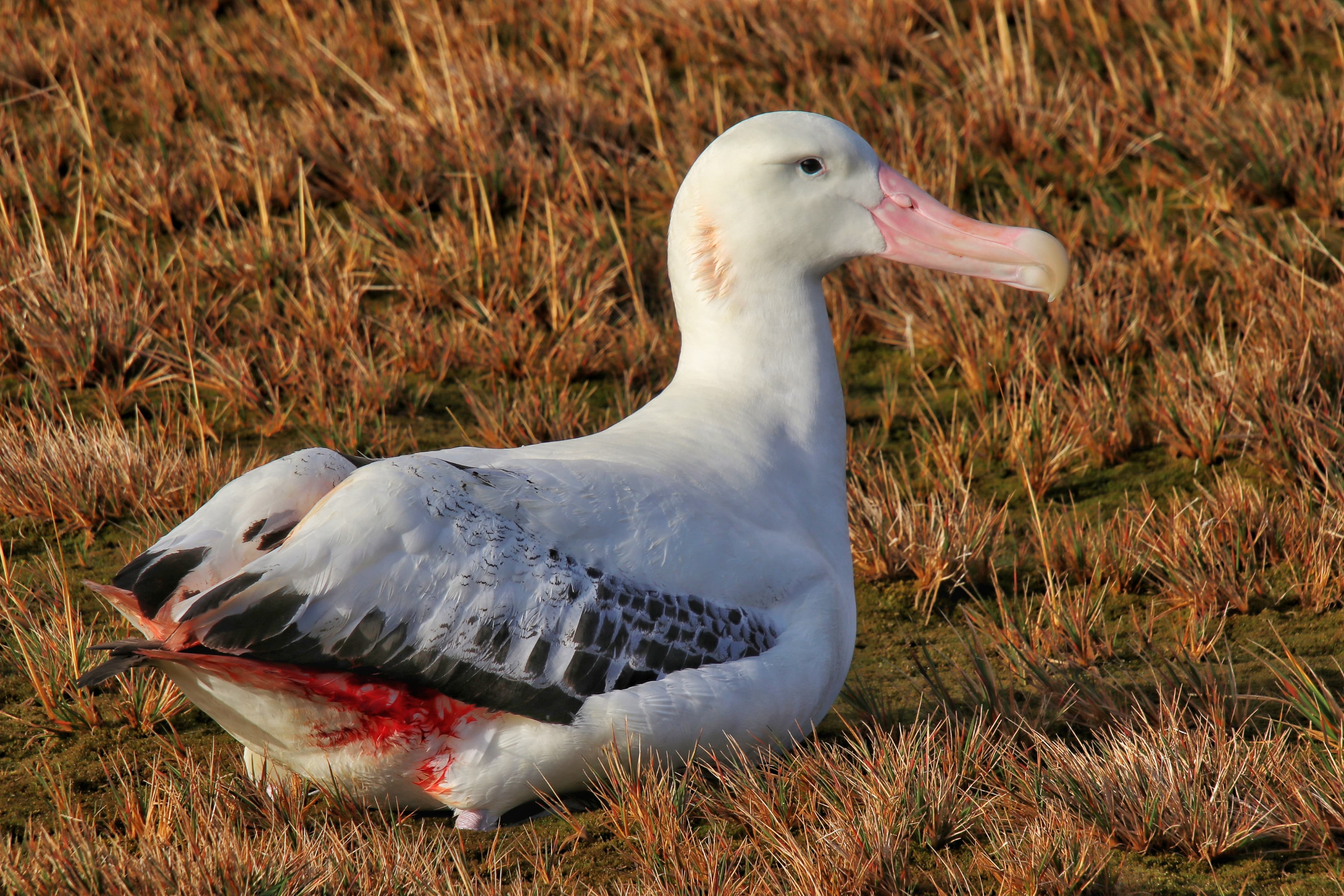 The problem: this Wandering Albatross has been attacked by House Mice on Marion Island, photograph by Chris Jones
The problem: this Wandering Albatross has been attacked by House Mice on Marion Island, photograph by Chris Jones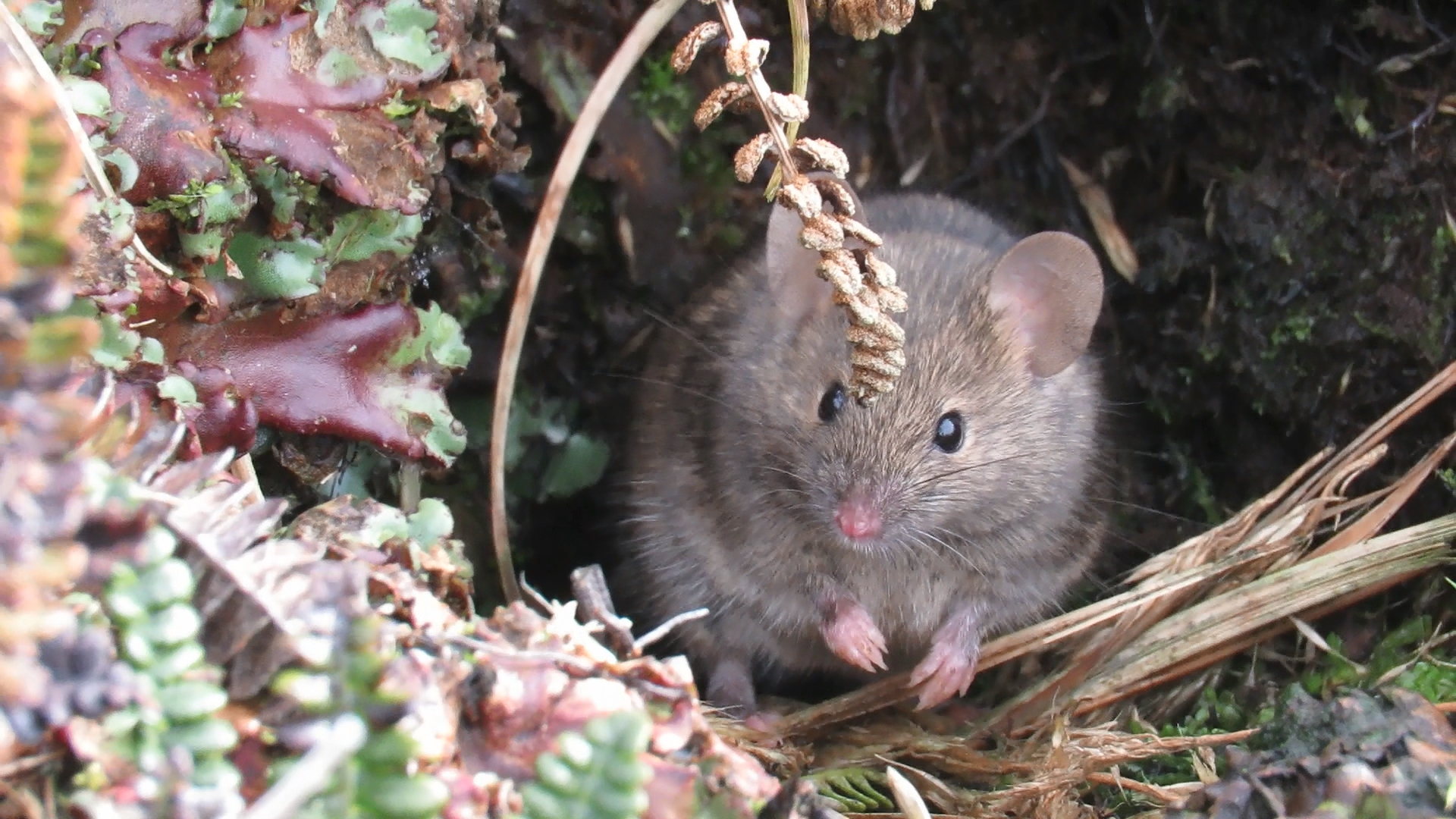
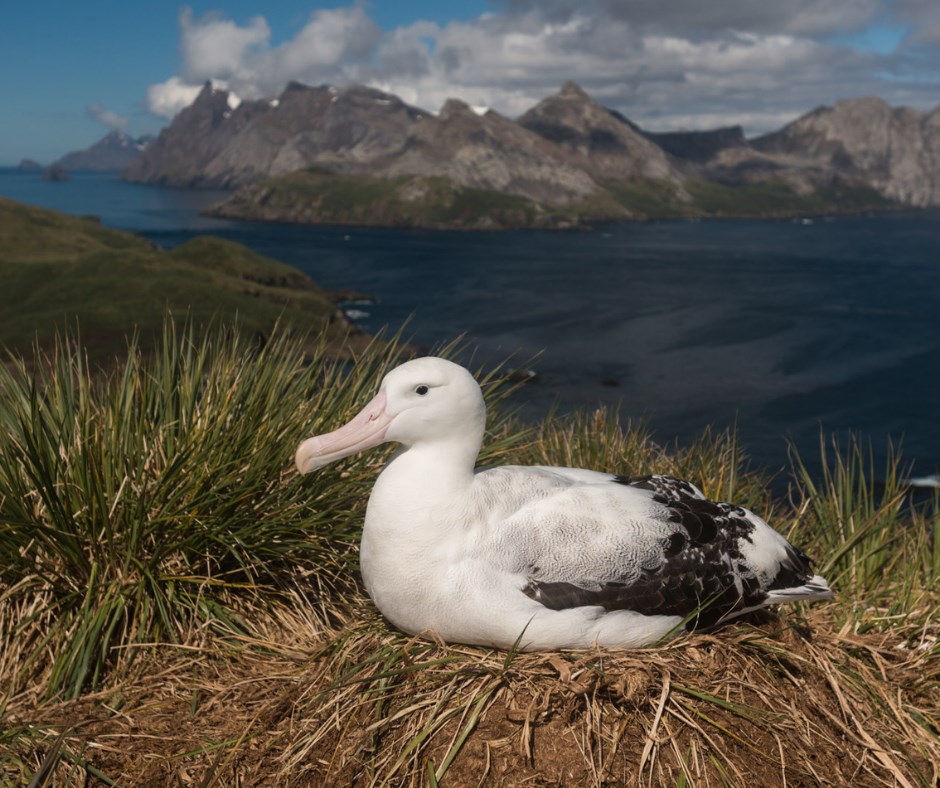 Wandering Albatrosses (pictured) are one of the species that feature in the paper's case study on the HPAI H5N1 outbreak in the sub-Antarctic region
Wandering Albatrosses (pictured) are one of the species that feature in the paper's case study on the HPAI H5N1 outbreak in the sub-Antarctic region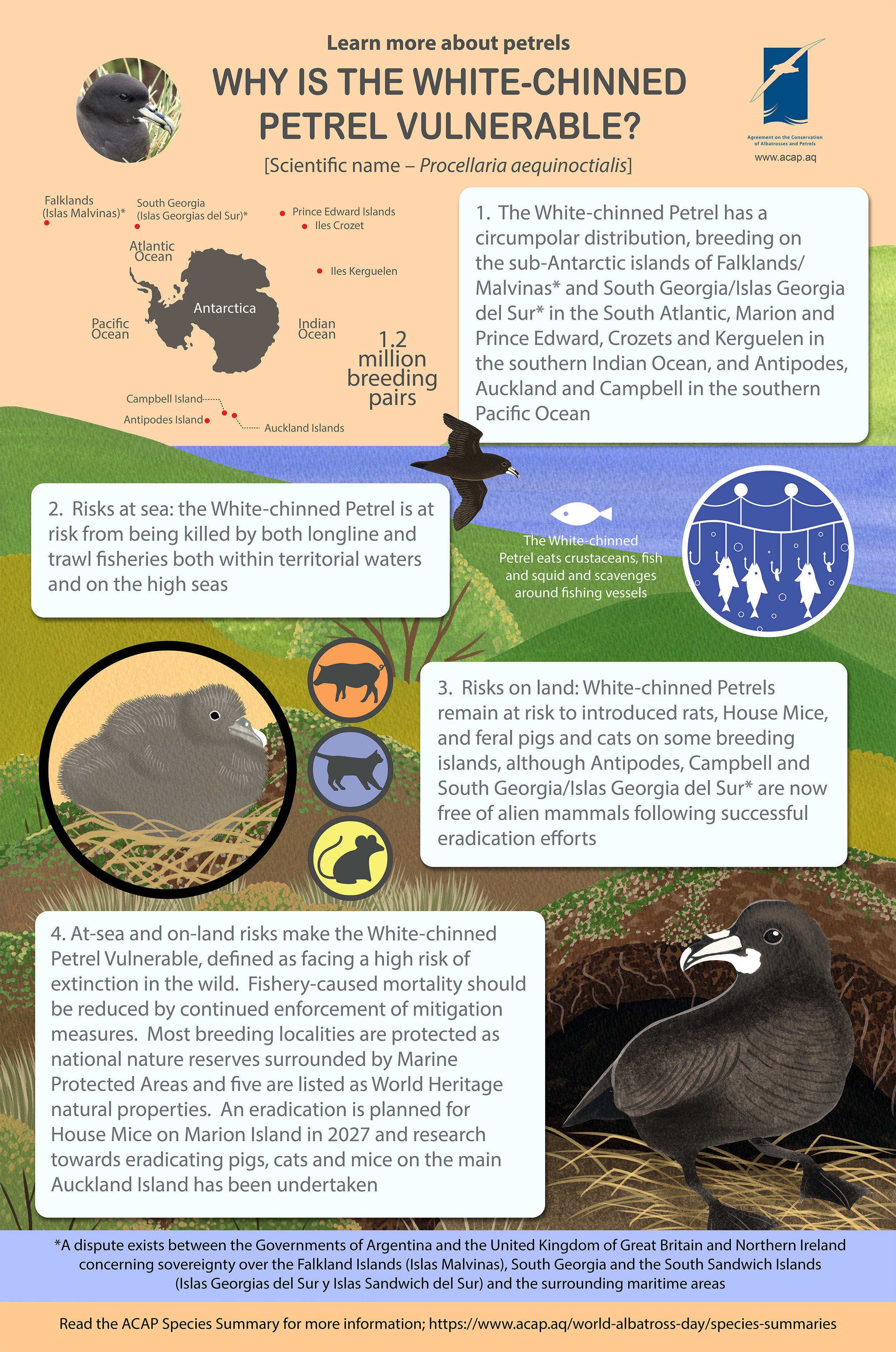
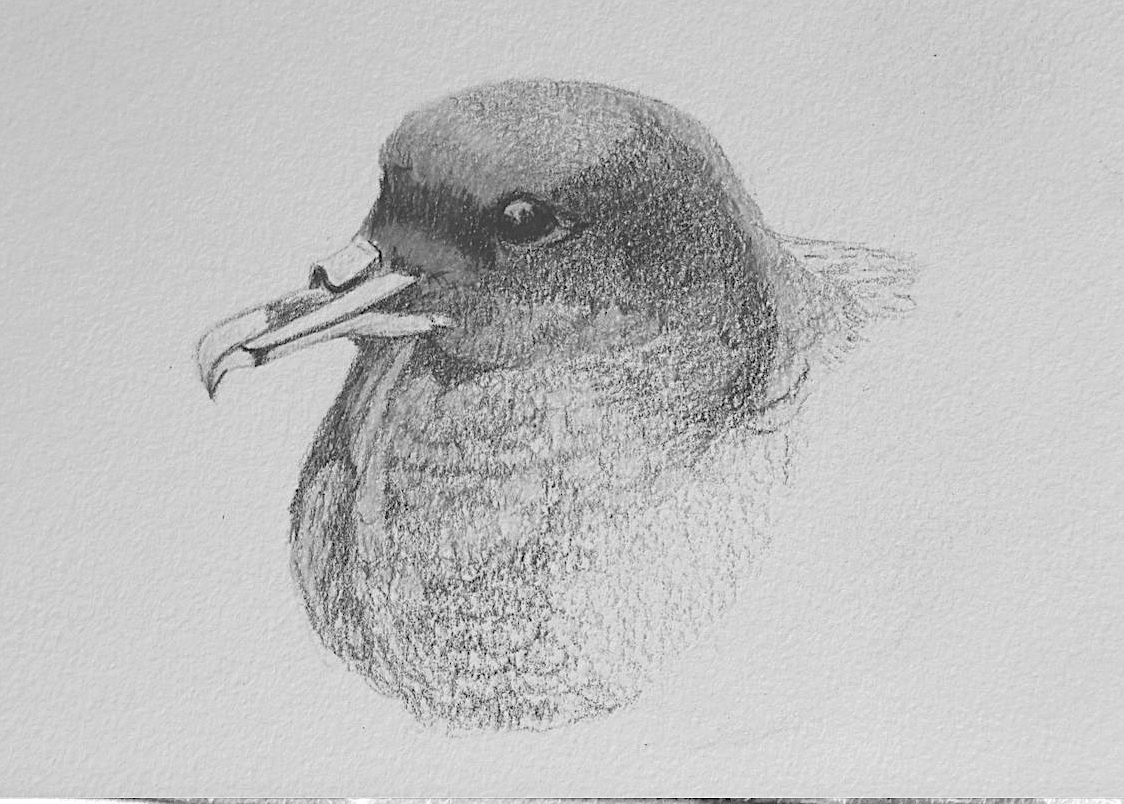 White-chinned Petrel by Judith MacKay of Artists and Biologists Unite for Nature for ACAP, after a photograph (see below) by Andy Wood
White-chinned Petrel by Judith MacKay of Artists and Biologists Unite for Nature for ACAP, after a photograph (see below) by Andy Wood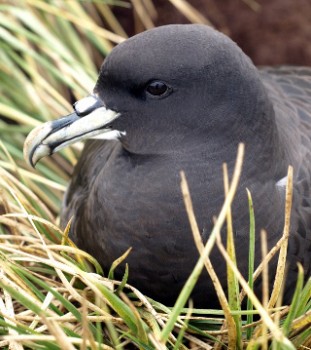 White-chinned Petrel on Bird Island, South Atlantic, photograph by Andy Wood
White-chinned Petrel on Bird Island, South Atlantic, photograph by Andy Wood